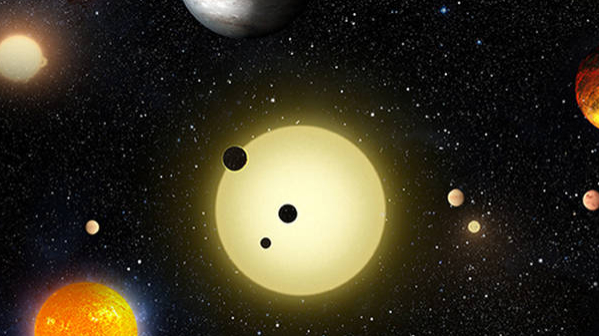NASA's Kepler has discovered over 1,000 new planets in our galaxy
The mega telescope's latest breakthrough is its biggest yet

Since 2009, the Kepler telescope has been staring deeply into our galaxy for new, potentially habitable planets. And today, NASA has announced that a whopping 1, 284 exoplanets (planets orbiting a star other than our own sun) have been discovered, bringing the total number of confirmed planets to over 2,000.
During NASA's latest briefing on Kepler's mission to uncover other Earth-like planets, a panel of experts who research the data extracted from the telescope shared their findings.
Paul Hertz, the Astrophysics Division director at NASA, addressed the "are we alone?" elephant in the room by stating rather confidently that "we live in a time when humanity can answer this question scientifically." (Unfortunately, this isn't the answer that some of our commenters were hoping for.)
And with Kepler's help, we're slowly, but surely covering a large chunk of ground –er, space. In case you need a refresher, it's the first telescope capable of detecting rocky planets in the habitable zones of their respected stars. To translate, Kepler is incredibly sensitive and capable of scoping out a needle in a haystack, so to speak.
Hertz continued with another boggling observation, saying that "thanks to Kepler, we now know that exoplanets are common. That most stars in our galaxy have planetary systems (Editor's note: !!!) And most of those have habitable zones."
A new, faster way to discover planets
Other than the sheer amount of newly confirmed planets in today's briefing, the other big announcement came from Timothy Morton, associate research scholar at Princeton University. Discovery has never been a challenge for Kepler, but validating the possible planets it finds can take a ton of work.
He and the team at NASA have developed a new statistical analysis method that reduces the overhead of follow-up research required to confirm whether these detected masses are actually rocky planets and not a false-positive.
Get daily insight, inspiration and deals in your inbox
Sign up for breaking news, reviews, opinion, top tech deals, and more.
To simplify a complicated process, the Kepler research team can now cross-referencing the shapes of the signals transmitted by Kepler with a simulation of how likely there are to be planetary imposters in our galaxy. While not totally fool-proof, this method acts as a "broom" to quickly sweep away imposters from the findings.
Additionally, the Kepler team has discovered, in total, three dozen "goldilocks" candidates in our galaxy's habitable zone. Ones that have just the right temperature, chemical makeup and atmospheric characteristics to support life similar to what's found on Earth. Get it?
What's next for Kepler?
We'll have to wait to wait until this coming October to hear about Kepler's next and final batch of galactic discoveries. But NASA won't be done peering into deep space for more clues about life on other habitable planets.
Kepler mission scientist Natalie Batalha stated that the team is "getting ready to pass the baton to future missions." NASA has the future of unmanned space exploration charted out, which sees the launch of TESS (Transiting Exoplanet Survey Satellite) next year. Its mission will be to study the galaxy's brightest stars to find more potential planets.
Cameron is a writer at The Verge, focused on reviews, deals coverage, and news. He wrote for magazines and websites such as The Verge, TechRadar, Practical Photoshop, Polygon, Eater and Al Bawaba.
